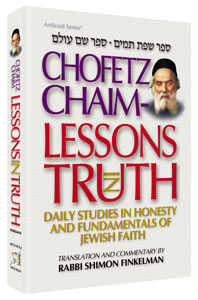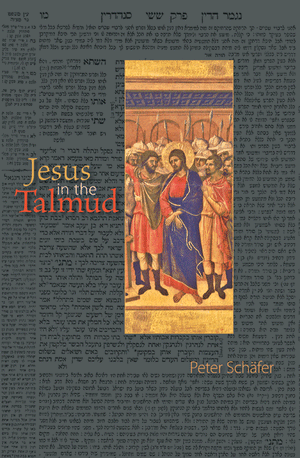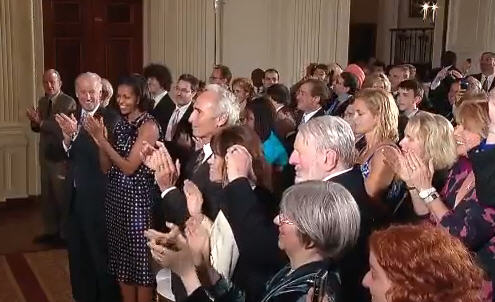A brilliant new book has been published by Daniel Sperber,
On Changes in Jewish Liturgy: Options and Limitations (Urim Publications).
(Urim Publications).
The publisher's summary says:
Although Jewish liturgy has its roots in antiquity, it evolved and developed throughout the ages to emerge in its present, largely standardized form. However, in some aspects, it is archaic, containing passages and statements that apply more to past eras than to the present day. In some cases, these passages may even be offensive to certain segments of our society. It is for this reason that this book attempts to delineate the parameters of halachically permissible changes in Jewish liturgy -- changes that have precedents in traditional sources and that may correct anachronisms and defuse possible conflict, thus enhancing the experience of prayer for an ever-widening spectrum of Orthodox Jewry.
The chapter headings of the learned short chapters will give you a clear picture of what the author covers and what are his perspectives on the subject.
• Introduction
• The Complexity of the Hebrew Prayer Book
• The constant Evolution of Our Liturgical Text
• The Variety of Liturgical Versions
• Blessings Offensive to Women
• Recommended Changes
• The Legitimacy of Change
• New Prayers and Innovative Creativity
• Talmudic Sources Forbidding Change in the Liturgy and Maimonides’ Understanding of Them
• Limits of Flexibility in Change
• The Dynamic Process of Change in Our Liturgy
• The Main Reasons for Change
• Examples of Internal Censorship
• The Talmudic Sources Revisited
• The Positions of Geonim and Rishonim
• Attempts to Fix a Single, Crystallized Version, and Their Failures
• Nusah ha-Ari and the Hasidic Position
• The Response of the Mitnaggedim
• The Impact of Printing on the Hebrew Prayer Book
• The Permissibility of Making Changes
• Afterword
The appendices cover interesting related topics that fall outside the main arguments of the book.
1. On the Liturgical Theories of Hasidei Ashkenaz
2. Seven Version of Birkat Nahem
3. The Ha-Siddur ha-Meduyak Affair
4. Corrupt Versions or Alternate Versions
5. The Piyyutim Controversy
6. The Avodah Prayer – An Example of the Complex Development of a Benediction
7. “For Your Covenant Which You Sealed in Our Flesh”
8. On R. Meir’s Three Benedictions
Also important to users for a book so rich in content, there are several indexes
1. Index of Primary Sources
2. Index of Prayer Books
3. Index of Prayers, Benedictions and Piyyutim
4. General Index
Talmudic analysis:
Sperber has read and mastered the entire range of scholarship on Jewish prayer. He draws liberally from primary texts going back to the Talmud and down through the middle ages to the present day. He knows the scholarly and halakhic literature inside and out. He translates the passages of all of these texts that he uses in his discussions with great facility and style.
Sperber argues his points with clarity and persistence. He clearly shows that prayers, over two millennia and across the Jewish communities of the world varied and that they changed. He also shows that rabbis of the past noticed and grappled with these dynamics.
The book includes many original Hebrew texts along with English translations of parts or all of them. There are photocopies of some of the prayers and commentaries from various manuscripts and printed books and other illustrations to illuminate the discussions.
The body of this book ends with this somewhat poetic paragraph:
The rich tapestry of our liturgy with its many themes can satisfy the variety of conflicting experiences to which Rabbi Soloveitchik refers. Indeed, just as "prayer does not proceed slowly along one straight path," so, too, out liturgy has leapt in a variety of directions creating that multicolored mosaic that is our prayer book.
We cannot disagree with the poetry of this ending statement, especially since it quotes the words of our revered teacher, Rabbi Soloveitchik. Tapestry, paths, leaps and mosaics are all valid and pertinent to the metaphoric reveries that a devoted Jew may apply to descriptions of the act of prayer.
We are completing our own little, humble book that will add to the discussion of prayer a bit more -- the ability to speak of six independent and distinct categories of prayer and from that to generate a more accurate, analytical and discursive theological description and discussion of the contents of the siddur and of the acts of Jewish devotion that we call davening.
 Yes, the four Ghermezian brothers are Orthodox Jews. Eskandar, Nader, Raphael and Bahman emigrated from Iran to Edmonton Alberta Canada in the late 1950s.
Yes, the four Ghermezian brothers are Orthodox Jews. Eskandar, Nader, Raphael and Bahman emigrated from Iran to Edmonton Alberta Canada in the late 1950s. It's amazing to us to see the simplistic public relations machine at Artscroll con the supposedly sophisticated Jewish Telegraphic Agency, who by the way has sent us dozens of appeals for donations this week, what is that all about? Is JTA a charity or is it a business?
It's amazing to us to see the simplistic public relations machine at Artscroll con the supposedly sophisticated Jewish Telegraphic Agency, who by the way has sent us dozens of appeals for donations this week, what is that all about? Is JTA a charity or is it a business? The Coen brothers know a lot about religion. We used to see them on occasion when they were young (or maybe it was just their parents talking about them) at our Orthodox synagogue in St. Louis Park, Minnesota. So yes, the Coen brothers are Jewish.
The Coen brothers know a lot about religion. We used to see them on occasion when they were young (or maybe it was just their parents talking about them) at our Orthodox synagogue in St. Louis Park, Minnesota. So yes, the Coen brothers are Jewish. The Times reports on a significant Talmudic clash of cultures in Israel.
The Times reports on a significant Talmudic clash of cultures in Israel.  We gave the Wovel the "Harris Epstein Award for best invention of the winter in 2007." My neighbor Henry bought one of these. Each year we say we may need to borrow it soon...
We gave the Wovel the "Harris Epstein Award for best invention of the winter in 2007." My neighbor Henry bought one of these. Each year we say we may need to borrow it soon... In some Jewish communities, they have the custom to read this booklet on Christmas eve - instead of studying Torah. A strange ritual indeed.
In some Jewish communities, they have the custom to read this booklet on Christmas eve - instead of studying Torah. A strange ritual indeed. The Times published a scandalous wedding announcement.
The Times published a scandalous wedding announcement. 
 Looking back, we found this post about a crisis of a moral vacuum. We thought, well just buy a new vacuum bag and that's that. But no, not what the ersatz leading thinker Erica Brown says.
Looking back, we found this post about a crisis of a moral vacuum. We thought, well just buy a new vacuum bag and that's that. But no, not what the ersatz leading thinker Erica Brown says. Overall the film Casino Jack is an awful movie about an awful person. The feeling we were left with after seeing it was somewhere between nausea and an intense desire to shower to wash the sleaze off.
Overall the film Casino Jack is an awful movie about an awful person. The feeling we were left with after seeing it was somewhere between nausea and an intense desire to shower to wash the sleaze off. The Times reports that jury will decide if a university discriminated against astronomer C. Martin Gaskell based on his evangelical faith in denying him a job at the MacAdam Student Observatory in Kentucky.
The Times reports that jury will decide if a university discriminated against astronomer C. Martin Gaskell based on his evangelical faith in denying him a job at the MacAdam Student Observatory in Kentucky. There are some topics relating to Judaism that we don't analyze here because they fall into a category that we don't want to cover: Rabbis Gone Wild.
There are some topics relating to Judaism that we don't analyze here because they fall into a category that we don't want to cover: Rabbis Gone Wild. Yes, American diplomat Richard Holbrooke was a Jew.
Yes, American diplomat Richard Holbrooke was a Jew. We were surprised to read recently about the discovery of a new text related to toasting.
We were surprised to read recently about the discovery of a new text related to toasting.
 We don't even have the energy to begin to discuss how disappointed we are in the presidency of Barak Obama so far.
We don't even have the energy to begin to discuss how disappointed we are in the presidency of Barak Obama so far.
 No, Orthodox rabbinical schools do not offer any courses in medicine. We should know. We graduated from one of them and there were no courses in medical subjects at our school.
No, Orthodox rabbinical schools do not offer any courses in medicine. We should know. We graduated from one of them and there were no courses in medical subjects at our school.


 We love our iPad. It's a new class of device that has many uses. Not a phone, not a laptop, something else.
We love our iPad. It's a new class of device that has many uses. Not a phone, not a laptop, something else. Avigdor Shinan's Hebrew volume, Pirkei Avot, A New Israeli Commentary, is a breathtaking rabbinic bestseller. The publication of this book was supported by the
Avigdor Shinan's Hebrew volume, Pirkei Avot, A New Israeli Commentary, is a breathtaking rabbinic bestseller. The publication of this book was supported by the 

 We hope we are wrong but it seems like Mark Oppenheimer in the Beliefs column of the Times decided to mock the American Academy of Religion’s annual conference. Instead of picking up on the mainstreams of what transpires at the meeting, he goes after a guy name Jeffrey Kripal who wants the paranormal, including claims of psychics and UFO nuts to be treated as equals to claims of religious experiences of the major faiths of the world.
We hope we are wrong but it seems like Mark Oppenheimer in the Beliefs column of the Times decided to mock the American Academy of Religion’s annual conference. Instead of picking up on the mainstreams of what transpires at the meeting, he goes after a guy name Jeffrey Kripal who wants the paranormal, including claims of psychics and UFO nuts to be treated as equals to claims of religious experiences of the major faiths of the world.
 At the same time that the Chabad Hasidic rabbinic leadership met Brooklyn, the Federation of Jewish charities mainly lay leadership met in New Orleans. Amazingly this caused a conflict and quandary for not a single person. There is not the slightest overlap between these two organizations of Jews who were meeting simultaneously to plot their next moves in seeking domination of the Jewish non-profit world.
At the same time that the Chabad Hasidic rabbinic leadership met Brooklyn, the Federation of Jewish charities mainly lay leadership met in New Orleans. Amazingly this caused a conflict and quandary for not a single person. There is not the slightest overlap between these two organizations of Jews who were meeting simultaneously to plot their next moves in seeking domination of the Jewish non-profit world.  Every time we hear about how this political policy or that one "creates jobs" -- we cringe.
Every time we hear about how this political policy or that one "creates jobs" -- we cringe. For those of you out there with seasonal affective sensitivity of any kind, know well that we all agree - November is the month that starts with NO.
For those of you out there with seasonal affective sensitivity of any kind, know well that we all agree - November is the month that starts with NO. We read what we can when we can and we only just now found a serious Jewish liturgy blog today, "
We read what we can when we can and we only just now found a serious Jewish liturgy blog today, " Congratulations to the Rabbi on finishing his task.
Congratulations to the Rabbi on finishing his task. Yes, we can see the point. Netflix is inching daily towards total streaming movies. We are growing ever more tired of books on CD.
Yes, we can see the point. Netflix is inching daily towards total streaming movies. We are growing ever more tired of books on CD. We have to say that admittedly this cannot be totally intelligible without the 45,000 words that precede it in my newest book. Be that as mysterious as it may, here is the tantalizing closing page of my latest magnum opus.
We have to say that admittedly this cannot be totally intelligible without the 45,000 words that precede it in my newest book. Be that as mysterious as it may, here is the tantalizing closing page of my latest magnum opus.